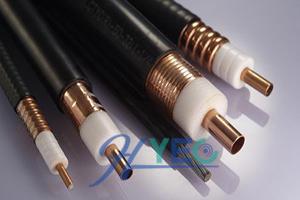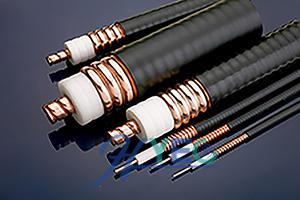Coaxial RF cable because its surface conductor is in a concentric orientation, electromagnetic energy is confined in the medium between the conductors in the surface, so it has a small attenuation, high shielding function, the use of frequency bandwidth and functional stability and other long-term RF cable structure It is diverse and can be classified according to different ways and styles.
I. Classification by cable structure
(1) Coaxial RF Cable
Coaxial RF cables are the most common type of construction. Because the conductors in the surface are in a concentric orientation, the electromagnetic energy is confined in the medium between the conductors in the watch, so it has the advantages of small attenuation, high shielding function, application frequency bandwidth and functional stability. Usually used to transmit RF energy from 500 kHz to 18 GHz.
Currently, there are two types of commonly used RF coaxial cables: 50Ω and 75Ω RF coaxial cables. The characteristic impedance 75Ω RF coaxial cable is commonly used in CATV networks, so it is called CATV cable, and the transmission bandwidth is up to 1GHz. Now the transmission bandwidth of common CATV cable is 750MHz.

(2) Symmetrical RF cable
Symmetrical RF cable circuits have an open electromagnetic field. Due to the radiant electromagnetic energy at high frequencies, the attenuation is increased and the shielding function is poor. In addition, the influence of atmospheric conditions is usually less used. Symmetrical RF cables are primarily used in the case of low RF or symmetric feeds.
(3) Spiral RF cable
The conductor in the coaxial or symmetrical cable can sometimes be made into a spiral coil shape, thereby increasing the inductance of the cable, thereby increasing the wave impedance of the cable and delaying the transmission of electromagnetic energy. The former is called a high resistance cable, and the latter is called a high resistance cable. To delay the cable. If the density of the spiral coils wound in the longitudinal direction is different, a varistor cable can be made.
Second, classified by insulation type
(1) Solid insulated cable
The physical high-frequency dielectric is completely filled between the conductors of the cable in the watch, and most flexible coaxial RF cables use this type of insulation.
(2) Air insulated cable
In the insulation layer of the cable, except for a part of the solid medium supporting the conductor in the watch, most of the volume is air. Its structural feature is that it can pass from one conductor to another without passing through the dielectric layer. Air insulated cables have a very low attenuation and are a common type of structure used at ultra high frequencies.
(3) Semi-air insulated cable
This type of construction is an insulation type between the two, the insulation of which is also a combination of air and solid medium, but requires a solid medium layer from one conductor to the other.
Three, classified by insulation material
Plastic insulated cable, rubber insulated cable and inorganic mineral insulated cable.
Four, classified by softness
Divided into soft cable, flat cable and rigid cable.

V. Classification by transmission power
It is divided into low power of 0.5 kW or less, high power cable of 0.5~5 kW medium power and 5 kW or more.
Six, classified by product use
Divided into low attenuation, low noise, micro-small and stable phase cable.
The above is HYEC-Shanghai Huihao Electronics to share the classification method of RF coaxial cable, we hope to help us!
Contact: Mr. Wong(Tech)
Phone: +86-15021372007
Tel: 021-66030982
Email: shhuiyong@163.com
Add: Building A, 260 Yuantai Rd, Baoshan District, Shanghai